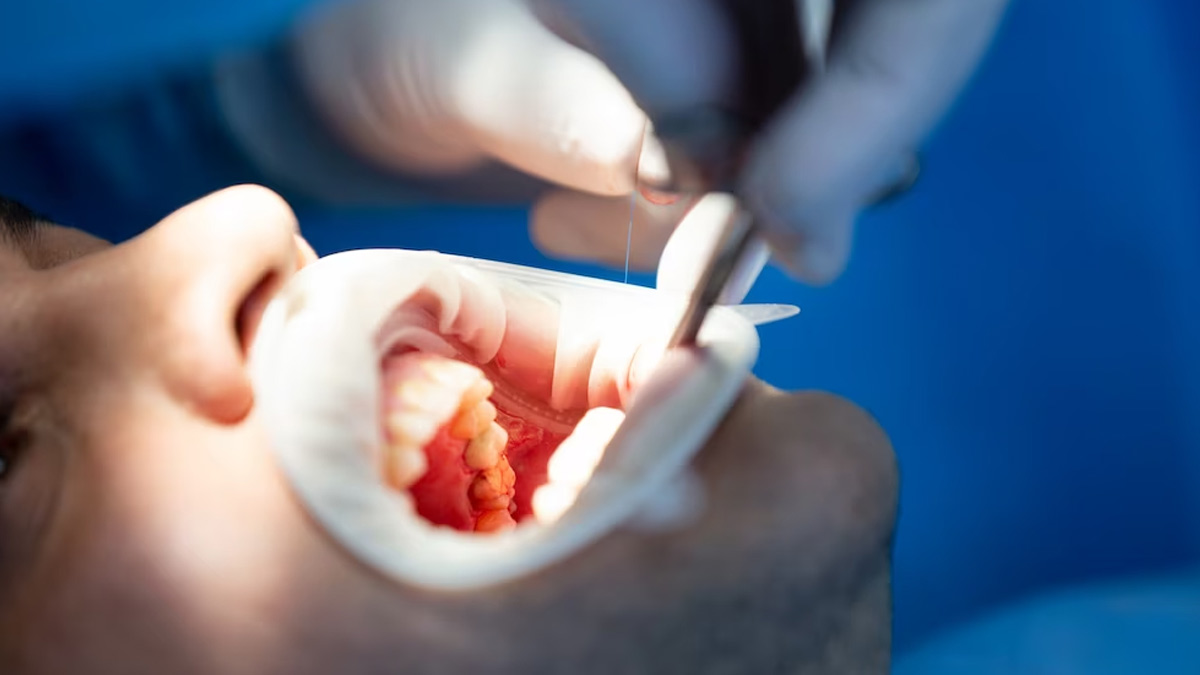
Root canal treatment is a popular dental restorative treatment people go for to get their infected and damaged teeth treated. While root canal treatment is highly successful, there are times when tooth extraction is the best option. In this article, Dr Nihal Yadav, BDS, Amayra Dental Clinic, Kaushik Enclave, Burari, Delhi and Former Resident, Deen Dayal Hospital, Hari Nagar, Delhi, explains the alternatives to root canal treatment and when the extraction is a better option.
Table of Content:-
Root Canal Treatment Vs Tooth Extraction

The decision between root canal treatment and extraction depends on various factors, including the extent of the dental issue, the condition of the tooth and surrounding structures, the patient's oral health, and their preferences. Dentists thoroughly evaluate each case to determine the most appropriate treatment plan.
Tooth Extraction
The tooth extraction procedure involves removing the entire tooth from its socket in the jawbone. To this, Dr Nihal added, "In situations where the tooth is considerably decayed, damaged beyond repair, or poses a risk to neighbouring teeth due to infection or overcrowding, a dentist may recommend a tooth extraction." It may also be recommended if the tooth has a severe fracture that makes root canal treatment risky or less effective.
Also Read: What Is Dry Socket Condition After Tooth Extraction, Dentist Explains
Dental Implants

After tooth extraction, dental implants can be a long-lasting and robust treatment that closely resembles the appearance and feel of natural teeth. Dr Nihal said, "A dental implant, typically made of a titanium post, is surgically implanted into the jawbone to function as a replacement tooth root." He added, "Once the implant has fused with the bone, a dental crown, which is a cap-like structure, is placed on top to replace the look of the lost tooth, making it functional like before."
Dental Bridge
Another alternative to root canal treatment is a dental bridge. This is best especially when multiple adjacent teeth are missing or need to be extracted.
According to the expert, "A dental bridge consists of one or more artificial teeth supported by dental crowns attached to the neighbouring teeth. The crowns act as anchors, holding the bridge in place, and filling the gap created by the missing teeth." He added that these bridges restore the ability to chew and speak properly while improving the aesthetics of the smile.
Partial Dentures

If you have one or more missing teeth, then you may also consider having partial dentures. "These are removable dentures, made of artificial teeth, set in a gum-coloured base, and attached to a metal or plastic framework," said Dr Nihal. Partial dentures are a less expensive option to root canal treatment, especially when multiple teeth are involved. While they are not as secure as dental implants or bridges, they can improve chewing performance and a smiling look.
Also Read: Dentist Tells Ways To Take Care Of Dentures In a Long Run
Watchful Waiting
Dr Nihal said, "When the infected tooth is not causing severe pain or complications, a watchful waiting approach may be suitable. This involves closely monitoring the tooth's condition and taking proactive measures, such as maintaining good oral hygiene and receiving regular dental check-ups." This allows a dentist to assess the tooth's progression and determine if root canal treatment or extraction is necessary in the future, he added.
Conclusion
While root canal treatment is a highly successful treatment for infected or damaged teeth, there are situations where extraction may be a more suitable option. Consulting with a dental professional is crucial to assess the individual circumstances and make an informed decision regarding the best course of treatment for preserving oral health and maintaining a functional and beautiful smile.
[Disclaimer: The information in this article is provided by a registered medical practitioner. However, we recommend you consult your healthcare provider for accurate diagnosis and treatment.]
Image Credits: freepik
Also watch this video
How we keep this article up to date:
We work with experts and keep a close eye on the latest in health and wellness. Whenever there is a new research or helpful information, we update our articles with accurate and useful advice.
Current Version